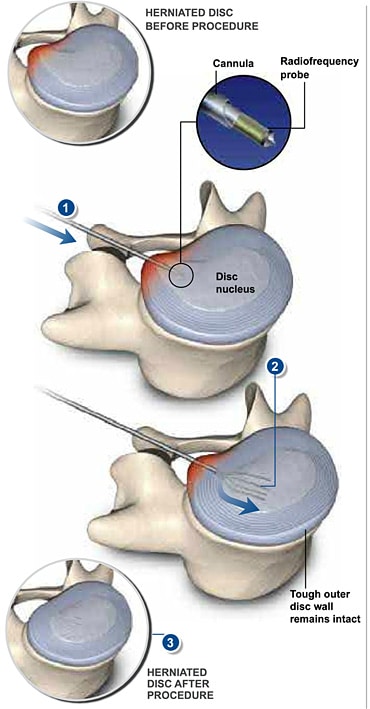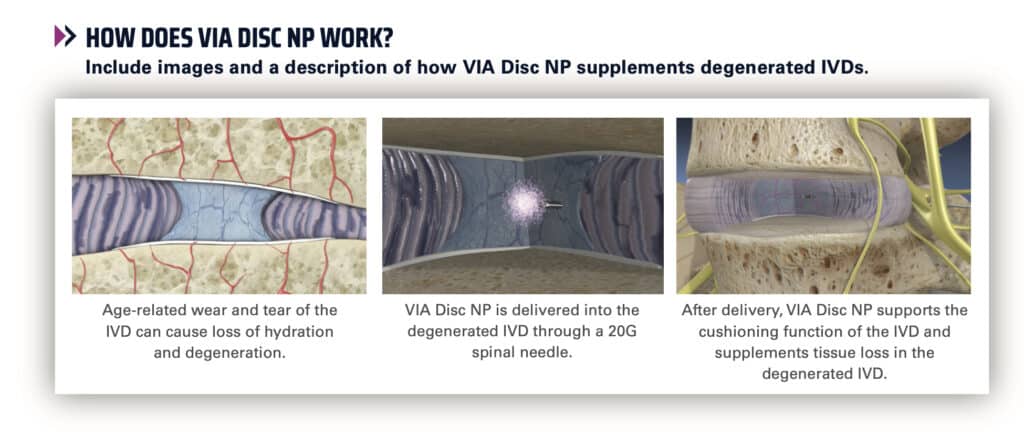Percutaneous Disc Nucleoplasty
A percutaneous disc nucleoplasty procedure is minimally invasive, which offers many advantages. For example, it requires no bone graft and promises a shorter recuperation time.
You may be a candidate for a percutaneous disc nucleoplasty procedure if you have symptoms related to a herniated disc or focal protrusion. In this minimally invasive procedure, your doctor removes disc tissue and relieves pressure on the root nerve. In the procedure, the doctor uses heat to thermally seal the disc after he has repaired it.
OVERVIEW
In this minimally invasive procedure, your doctor uses a small needle and advanced radiofrequency technology to reduce a herniated disc. Refer to the top left illustration. A percutaneous disc nucleoplasty quickly relieves pain in most patients.
The procedure may be performed on an outpatient basis using a gentle, relaxing medicine and local anesthetic. The technique is described below. Talk to your doctor about your risks and recovery expectations.
 1. INSERTING THE CANNULA
1. INSERTING THE CANNULA
After your doctor injects some anesthetic to numb the area, he or she inserts a thin needle called a cannula through your back and into the herniated disc. Your doctor uses a fluoroscope, which displays live X-ray images, to guide the placement of the cannula. See illustration 1.
2. TREATING THE DISC NUCLEUS
As shown in illustration 2, the surgeon inserts a small radiofrequency probe through the cannula and into the disc. The device sends pulses of radio waves to dissolve small portions of the disc nucleus. Because the doctor removes only enough disc material to reduce the pressure inside the disc, your spine remains stable.
3. RELIEVING THE HERNIATION
The empty space that the probe created allows the disc to reabsorb the herniation. Your surgeon uses heat from the probe to seal the disc, as you can see in illustration 3.
4. RECOVERING FROM THE PROCEDURE
After your physician removes the probe and the needle, he or she covers the insertion area in the skin with a small bandage. Because no muscles or bone were cut during the procedure, recovery is fast, and scarring is minimal.
You may need a day of bed rest after the procedure, and then some physical therapy. You usually can return to your normal daily activities within one to six weeks.
SURGICAL PROCEDURES

